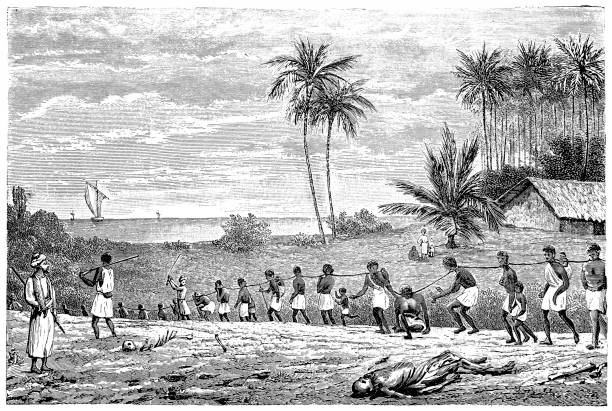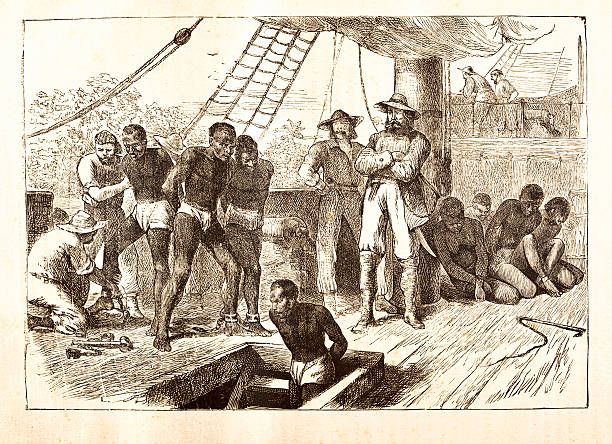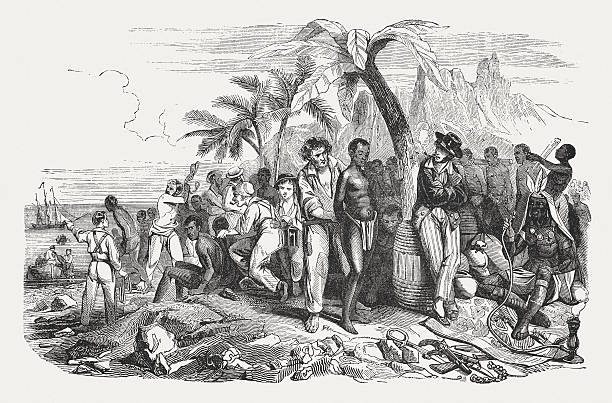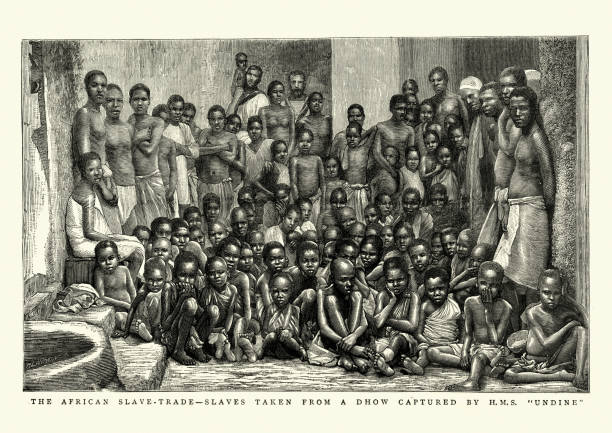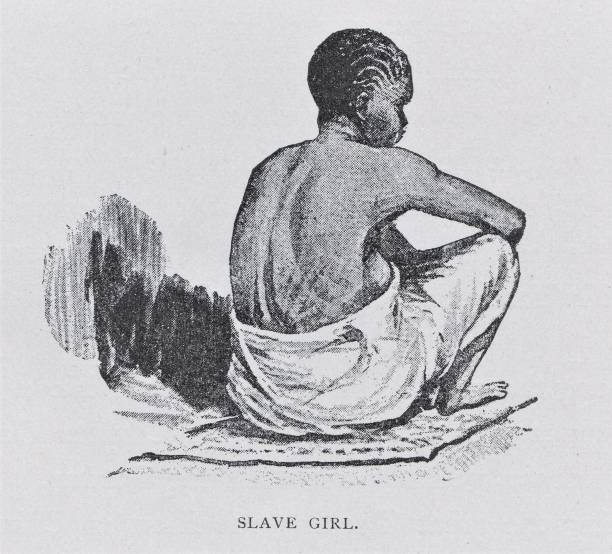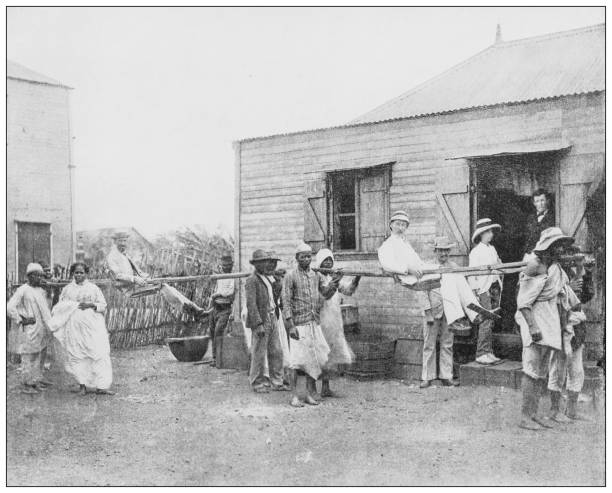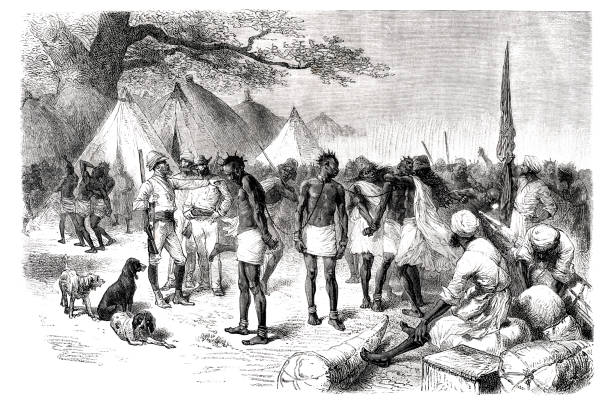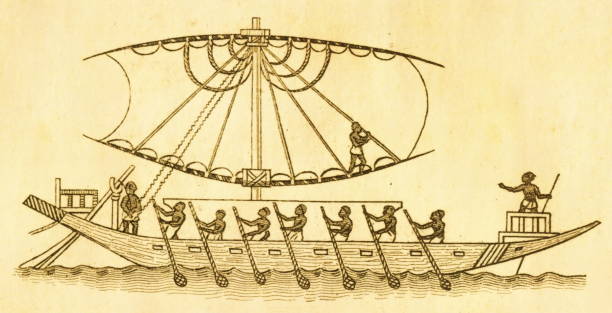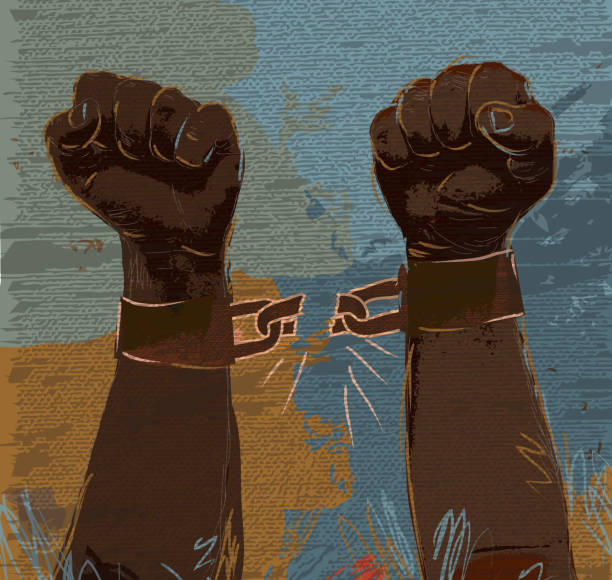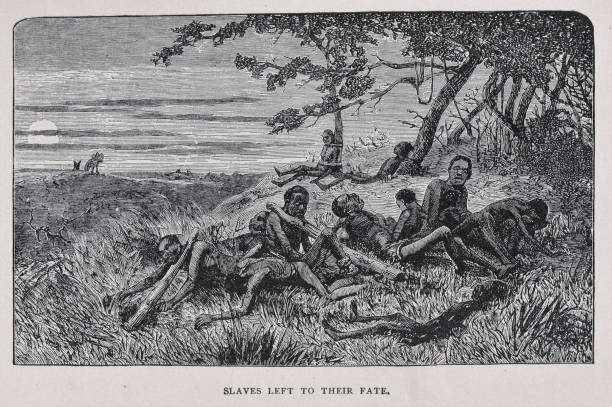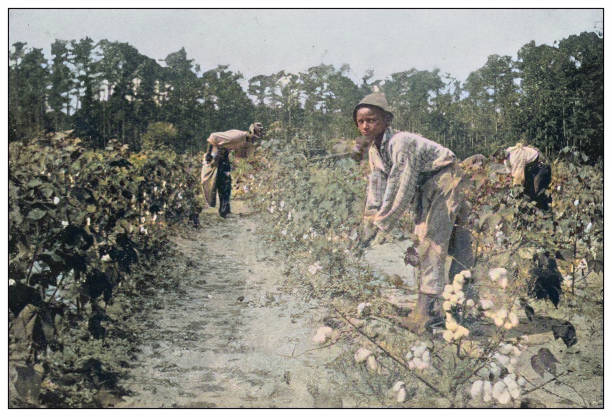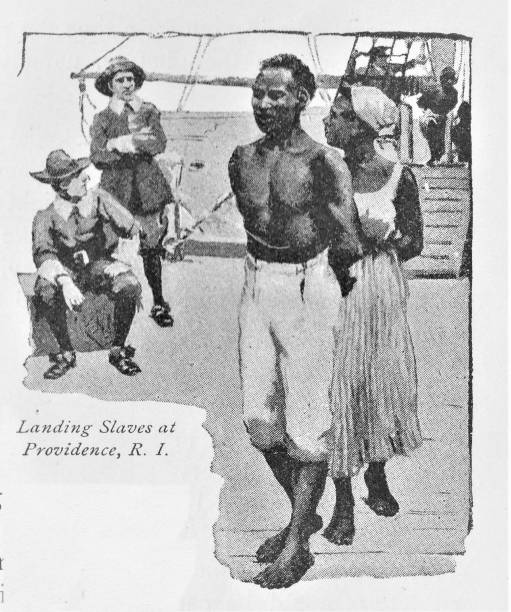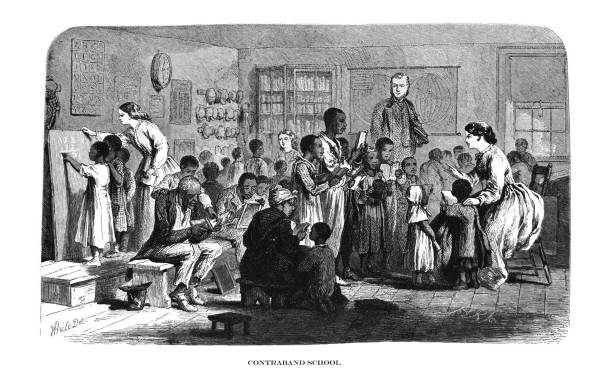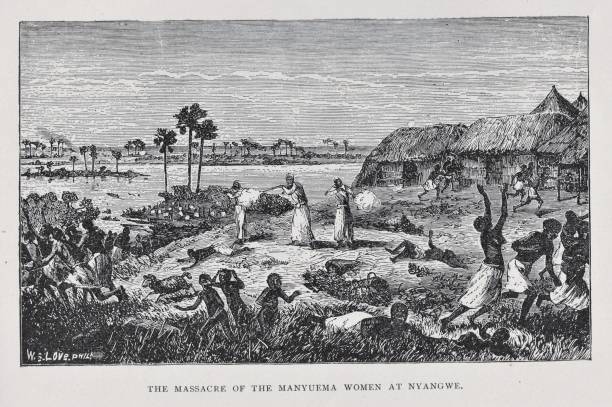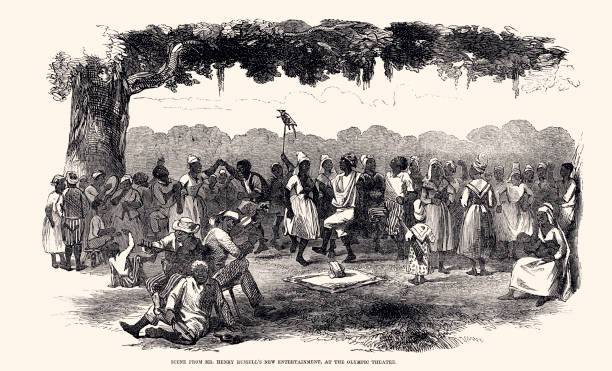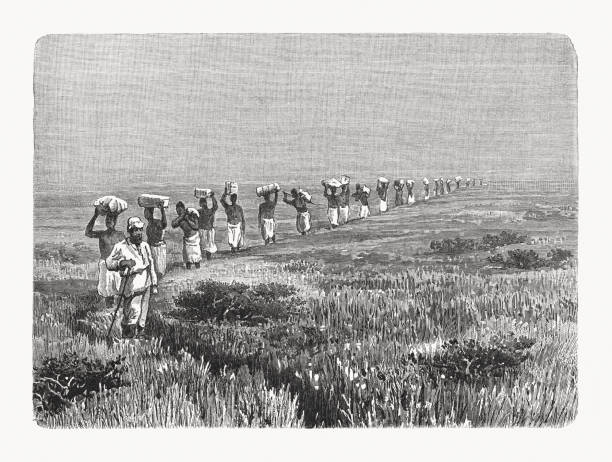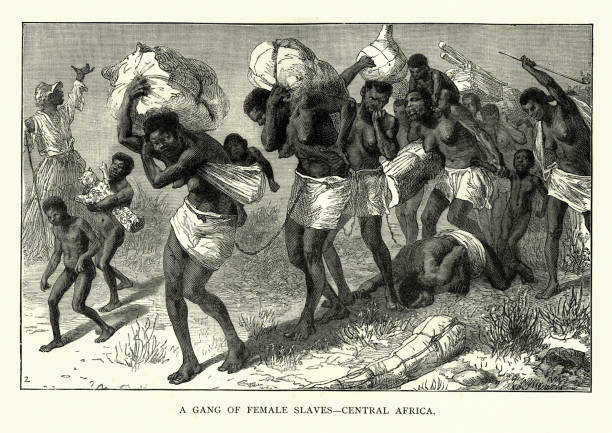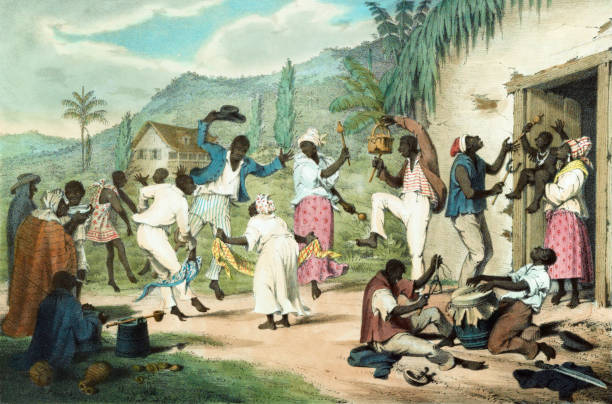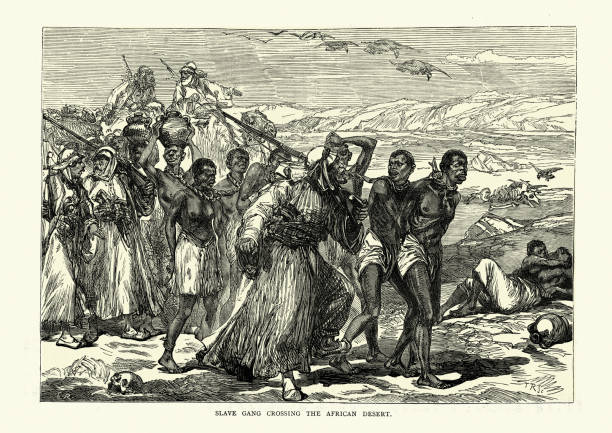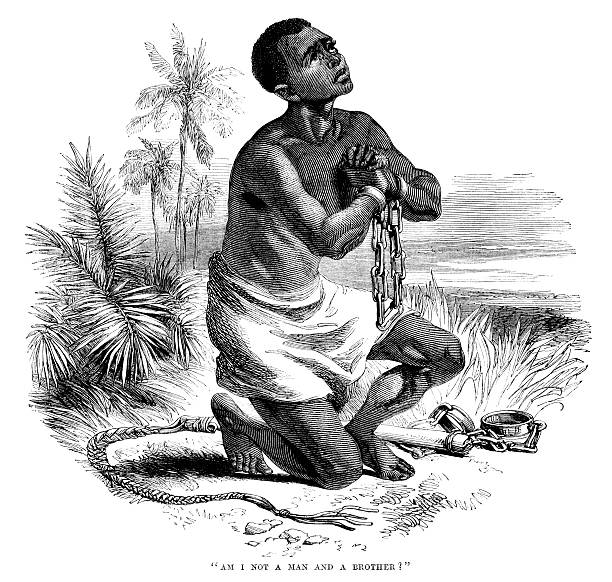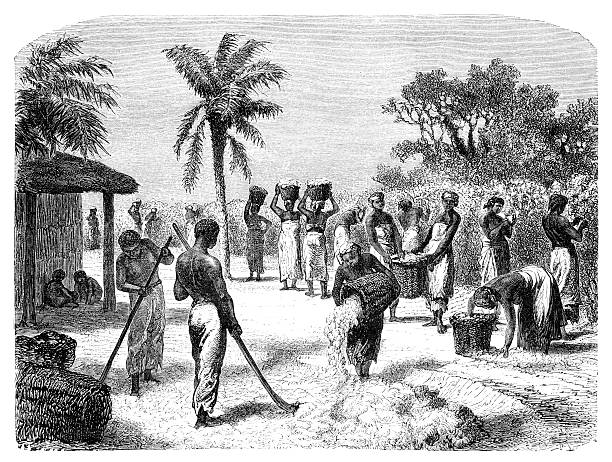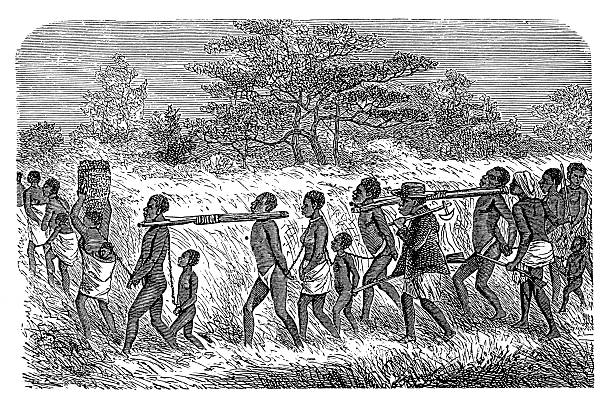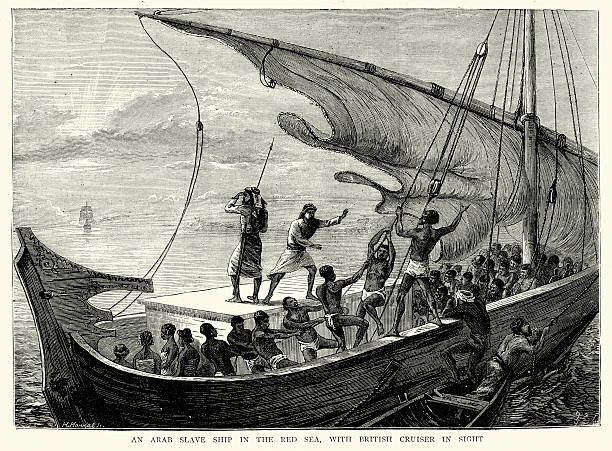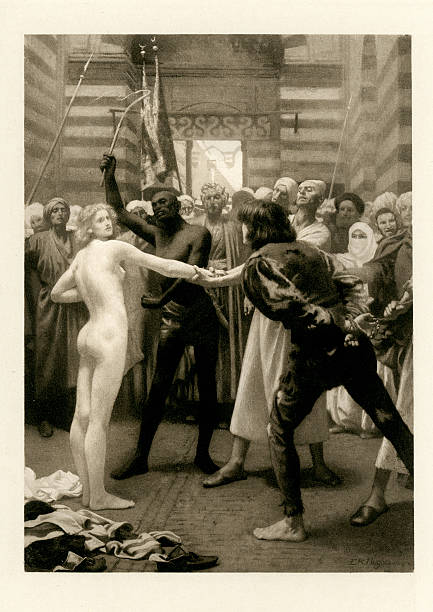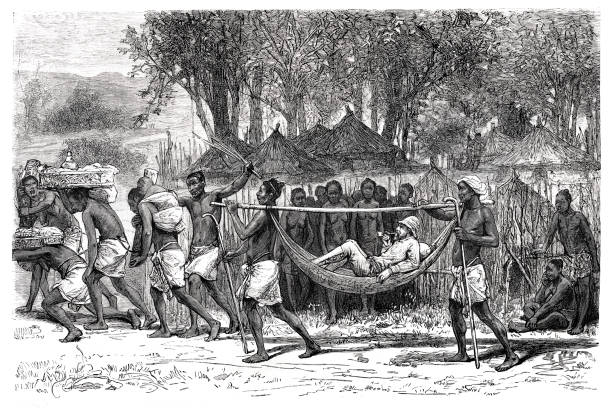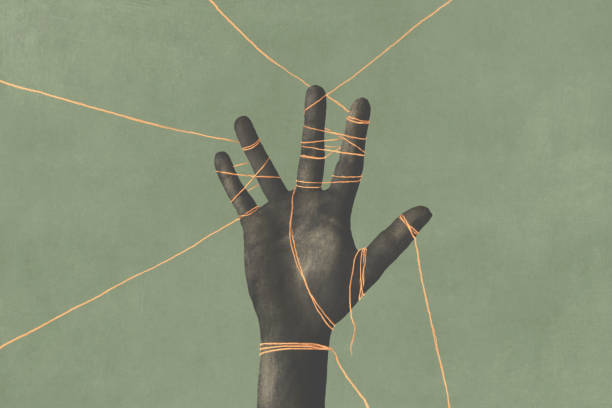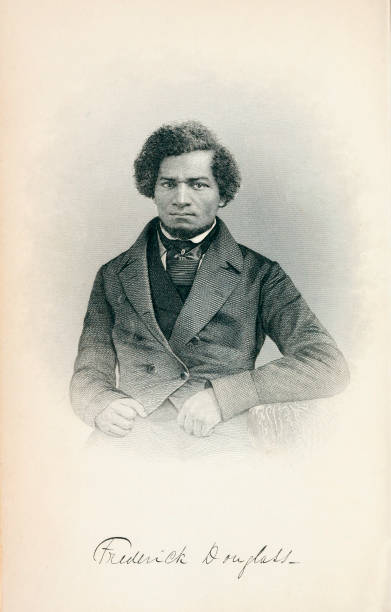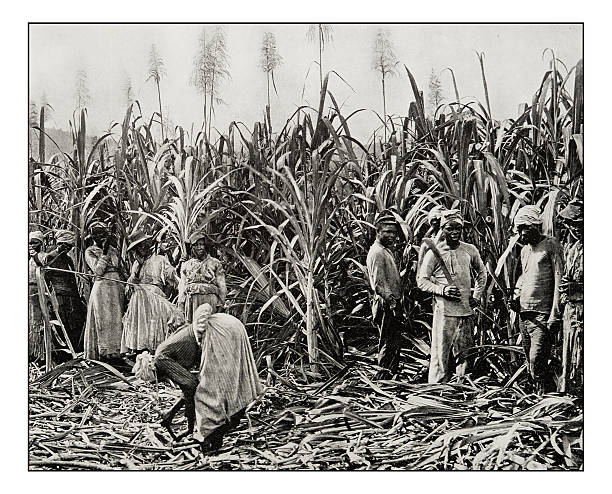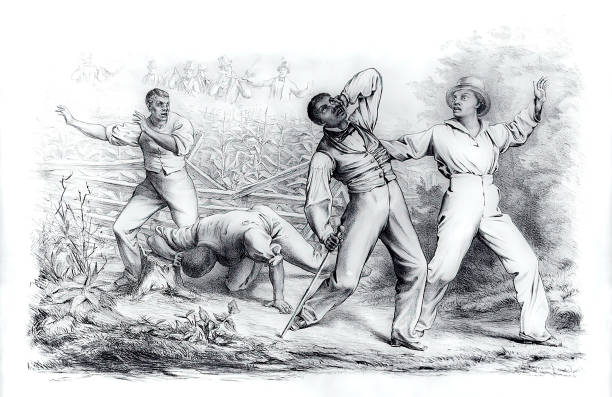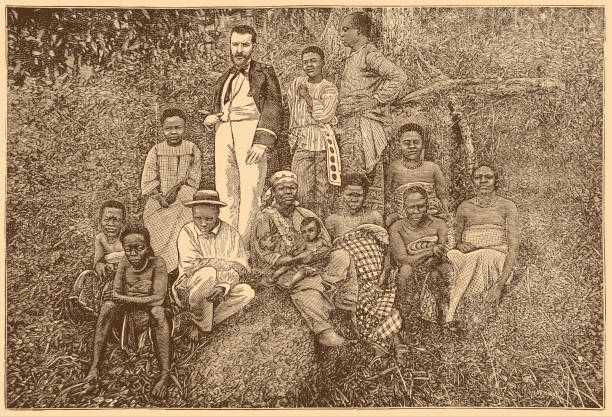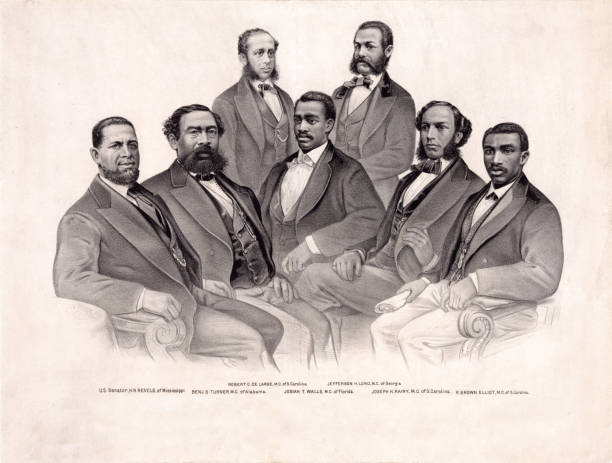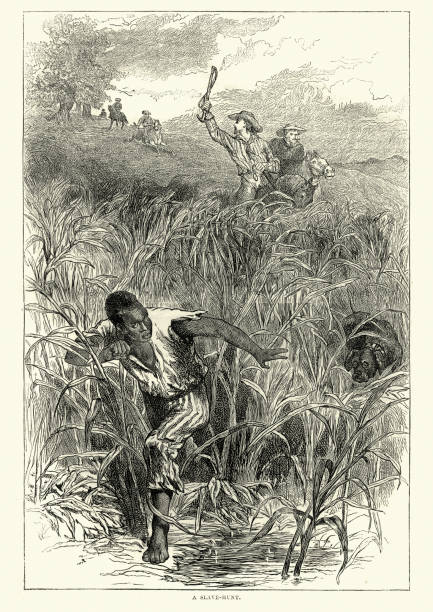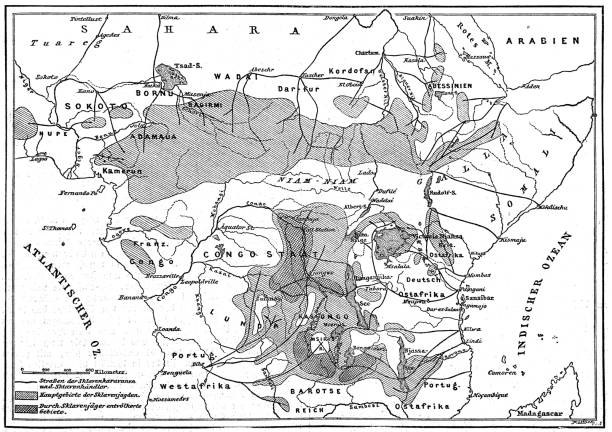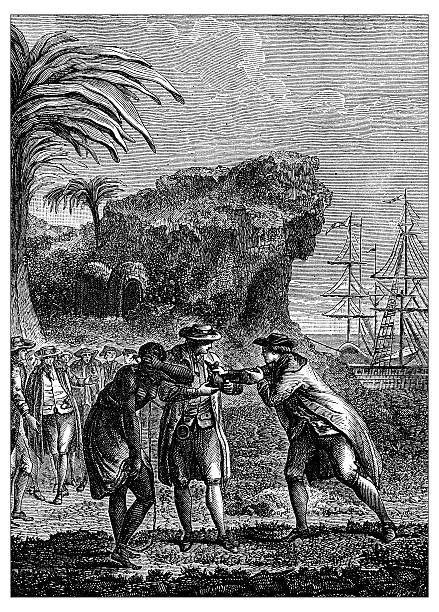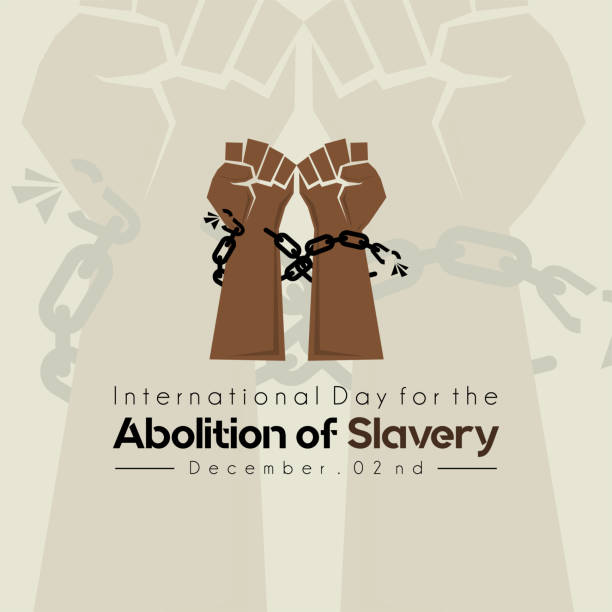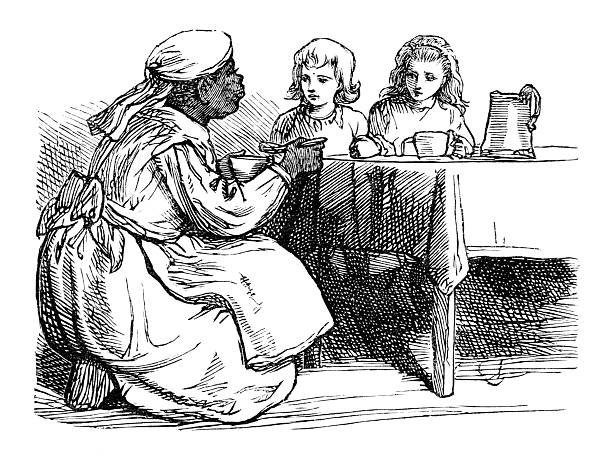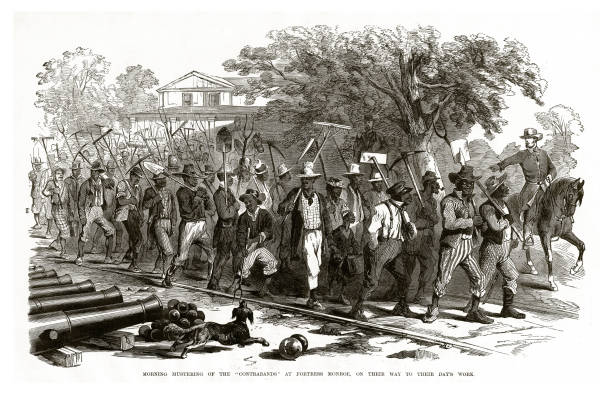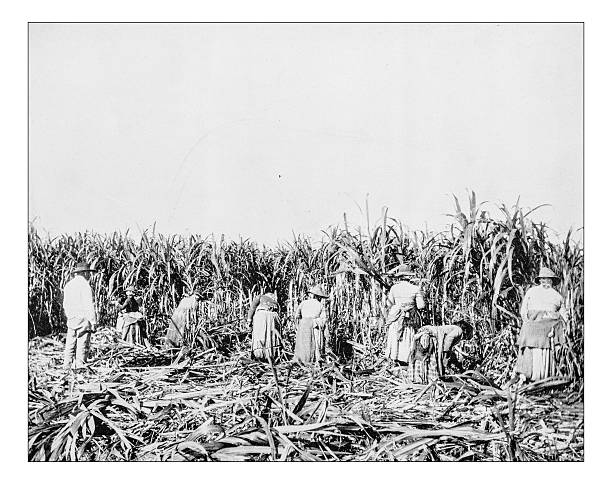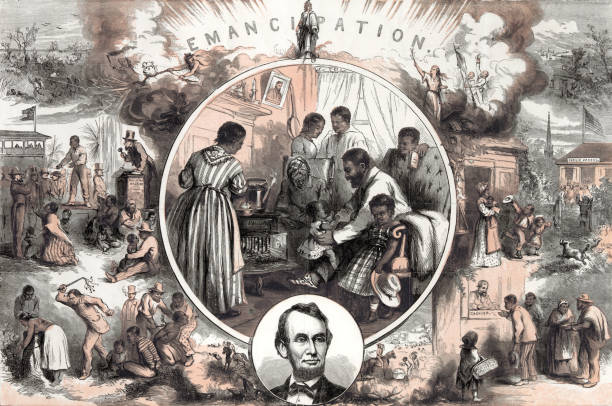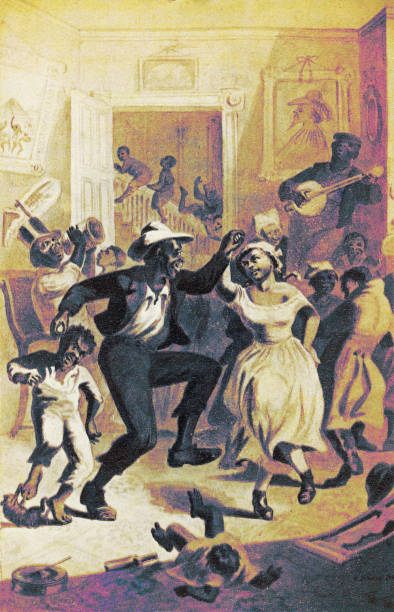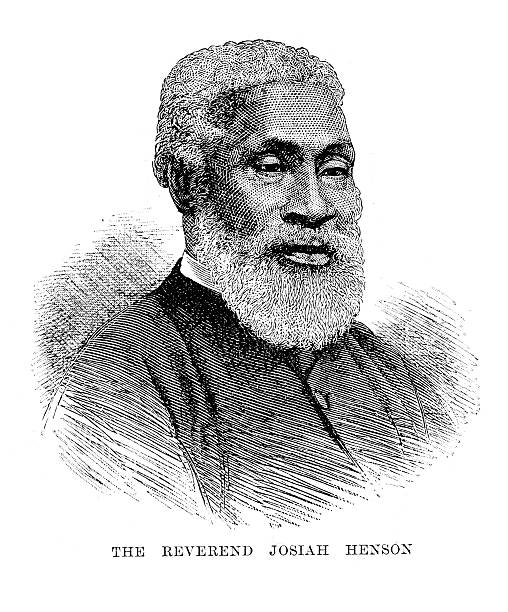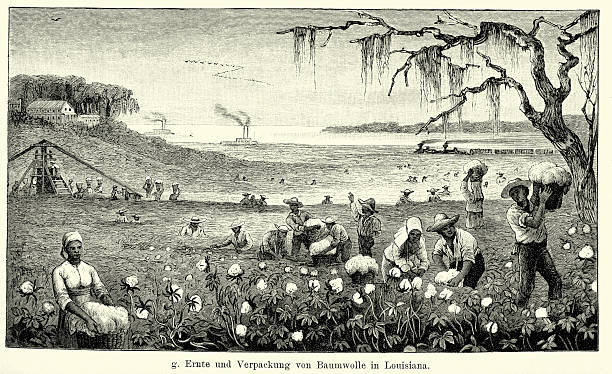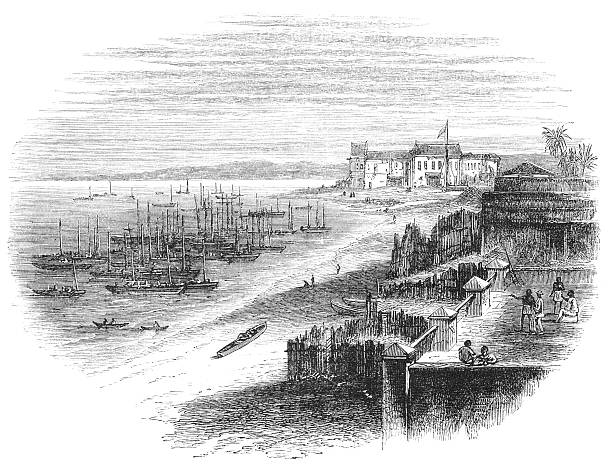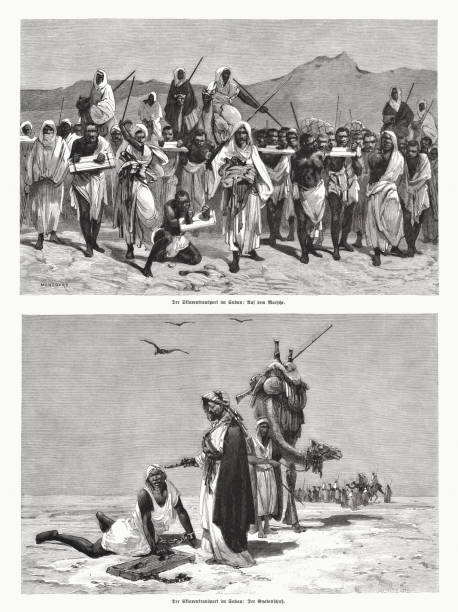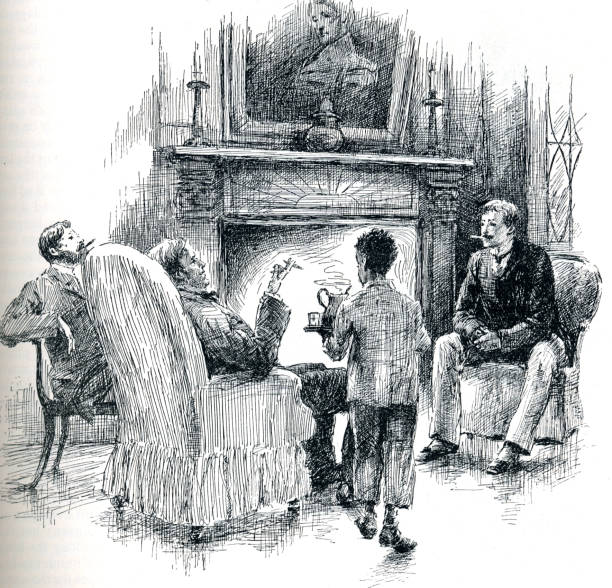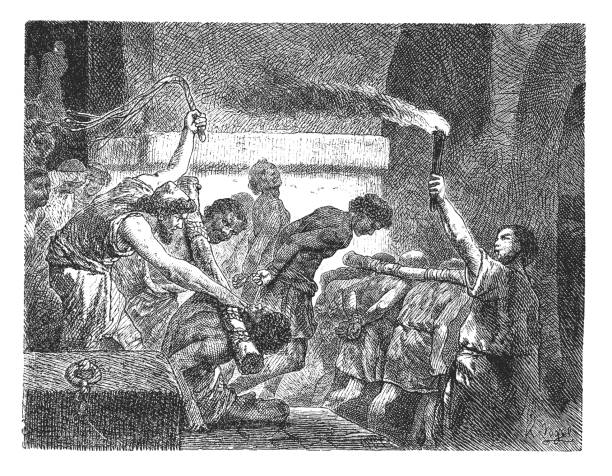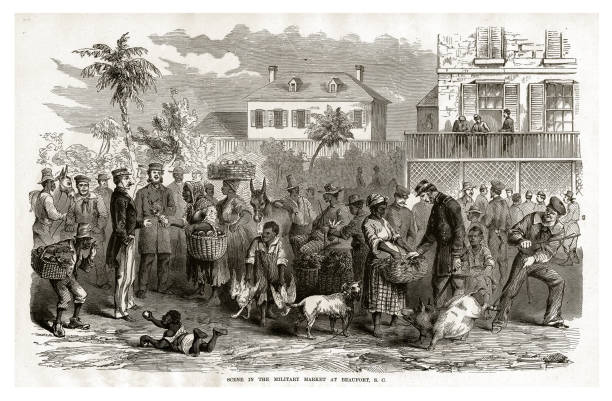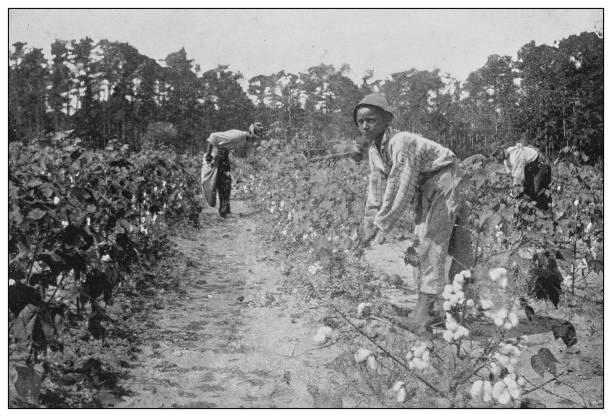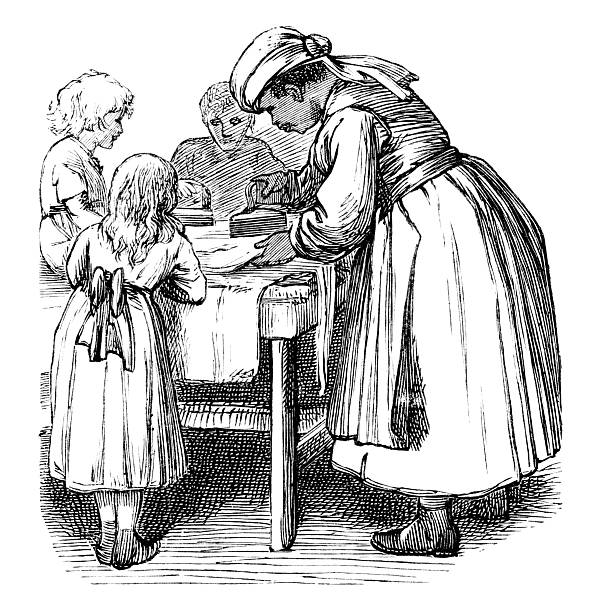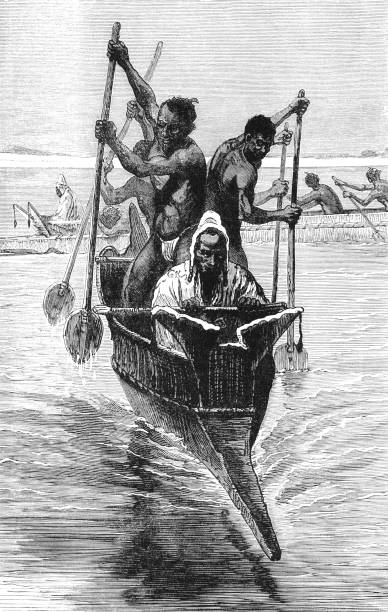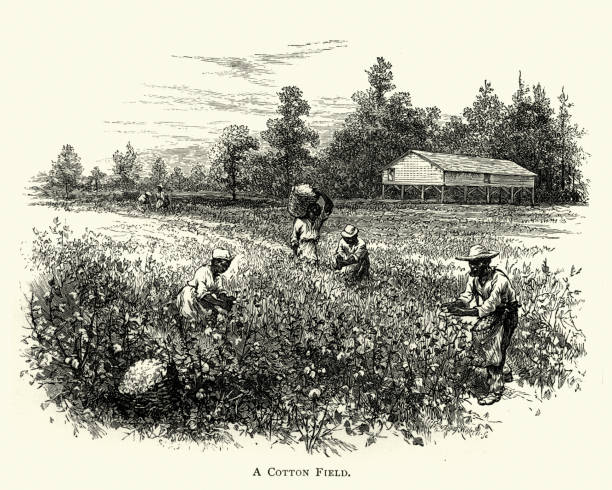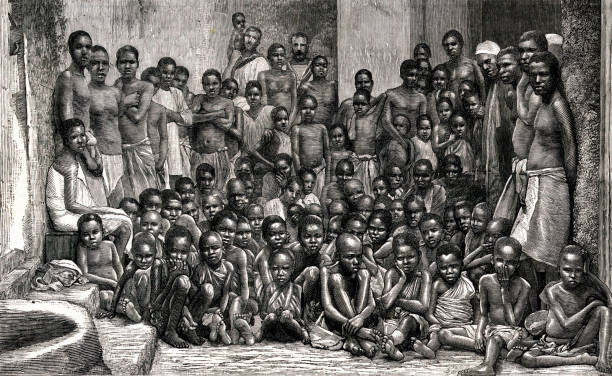
African Slaves stock illustrations
Browse 2,300+ african slaves stock illustrations and vector graphics available royalty-free, or search for slavery or slaves in america to find more great stock images and vector art.

Vintage engraving shows a crowd of African men, women, and children who had been rescued by the British navy from a slaving vessel in 1884. Two British sailors from the HMS Undine are seen in the background. Although the slave trade was abolished in many countries during the 19th century, slave trading continued in other countries.
Illustration of a Region of Congo: transportation of negro slaves
Steel engraving from 1881 with great details
A slave market on the African coast in the 19th century. Wood engraving, published in 1855.
Vintage engraving of African slave trade, Freed slave rescued by HMS Undine, 1884
Back view and profile of an African woman in the 1800s. Illustration published 1891. Source: Original edition is from my own archives. Copyright has expired and is in Public Domain.
British colonist trading with slaves in West Africa 1877 Original edition from my own archive Source : Tour du monde 1877 Drawing : Emile Bayard
19th-century engraving of a fishing boat in the Nile. Published in Systematischer Bilder-Atlas zum Conversations-Lexikon, Ikonographische Encyklopaedie der Wissenschaften und Kuenste (Brockhaus, Leipzig) in 1875.
Vector illustration abstract of strong hands and arms breaking the chains. Download includes Illustrator 10 eps with transparencies, high resolution jpg and png file. See my portfolio for similar concepts.
When slaves were in bad physical condition, mostly due to ill treatment by slave traders, they were left behind to die in 1800s Africa. Illustration published 1891. Source: Original edition is from my own archives. Copyright has expired and is in Public Domain.
African slaves arrive in Rhode Island in Colonial America. Illustration published in The New Eclectic History of the United States by M. E. Thalheimer (American Book Company; New York, Cincinnati, and Chicago) in 1881 and 1890. Copyright expired; artwork is in Public Domain.
From First Century of National Existence; The United States - 1873
Slave traders shot 300-400 women in their village in the Congo, Africa, July 14, 1871, then captured other Africans and enslaved them. Illustration published 1891. Source: Original edition is from my own archives. Copyright has expired and is in Public Domain.
The diorama represents African-American life in freedom and in slavery. Vintage engraving circa late 19th century. Digital restoration by Pictore.
East African convoy with bearers in the 19th century. Wood engraving, published in 1897.
Vintage engraving of Gang of females slaves, Central Africa, 19th Century
Vintage illustration features African Trinidadians playing music and dancing.
Vintage illustration of Trans-Saharan slave trade, Slaves forced to cross desert, 19th Century
"Am I not a man and a brother?" An iconic anti-slavery illustration based upon the medallion produced by Josiah Wedgwood in 1787 as an important contribution to the movement for the Abolition of Slavery. (From "The Family Friend" published by S.W. Partridge & Co., London, 1875.) The abhorrent business of trading in slaves was outlawed in Britain in 1807.
African Americans harvesting cotton. Illustration originally published in Hesse-Wartegg's "Nord Amerika", swedish edition published in 1880. The image is currently in public domain.
"Illustration of slaves in Africa. Published in Systematischer Bilder-Atlas zum Conversations-Lexikon, Ikonographische Encyklopaedie der Wissenschaften und Kuenste (Brockhaus Verlaghaus, Germany). A 1875 edition."
Vintage engraving of a Arab slave ship in the Red Sea fleeing from a Royal Navy cruiser. The Graphic, 1874
A scene from the Novellino by Masuccio Salernitano. Masuccio Salernitano (1410 to 1475), born Tommaso Guardati, was an Italian poet. Born in Salerno or Sorrento, he is best known today for Il Novellino, a collection of 50 short stories, each prefaced by a letter of dedication to a famous person and with an epilogue containing the moral of the story. Susanna a Captive
Olanda, Sankuru, Democratic Republic of the Congo Original edition from my own archive Source : Tour du monde 1877 Drawing : D. Maillart
Vintage portrait of Frederick Douglass (1818-1895), an American social reformer, abolitionist, orator, writer, and statesman. After escaping from slavery in Maryland in 1838, he became a national leader of the abolitionist movement in Massachusetts and New York.
Vintage illustration shows a group of four black men, possibly freedmen, ambushed by a posse of six armed whites in a cornfield. The Fugitive Slave Act passed by Congress in September 1850 allowed slave-hunters to seize alleged fugitive slaves without due process of law and prohibited anyone from aiding escaped fugitives or obstructing their recovery. The law threatened the safety of all blacks, slave and free, and forced many Northerners to become more defiant in their support of fugitives.
Illustration of a Pietro Paolo Savorgnan di Brazzà Italian-born French explorer with a group of indigenous people
Slavery in America - Sugar Cane Plantation
Vintage portrait features the first African-American Senators and Representatives in the 41st and 42nd Congress of the United States, 1869-1873.
Vintage engraving of Hunting a runaway slave, Southern USA, 19th Century. African american man running through long grass chased by men on horseback with dogs
Illustration from 19th century
International Day for the Abolition of Slavery, Hand with Chain and background
An illustration of a West Indian children's nurse from "The Babes in the Basket or Daph and Her Charge" by C. E. Bowen, publ. T Nelson & Son, 1873. The story relates how she was rescuing the children in her charge from an uprising on the island and smuggling them away on a Yankee ship. Here she is giving the children a meal.
Vintage engraving of Workers picking cotton, Louisiana, 19th Century
Engraving of Morning Mustering of the "Contrabands" at Fortress Monroe, on Their Way to Their Day's Work Civil War Engraving from "Famous Leaders and Battle Scenes of the Civil War," Published in 1864. Copyright has expired on this artwork. Digitally restored.
Antique photograph of 19th century slaves working in a sugar plantation in Lousiana (Usa)
Vintage illustration represents the emancipation of Southern slaves at the end of the American Civil War. This image contrasts the life of a slave and that of a free man's life.
Vintage illustration features a group of African-Americans dancing in celebration for Juneteenth, also known as Freedom Day, Jubilee Day, and Cel-Liberation Day, an American holiday celebrated annually on June 19. It commemorates June 19, 1865, when Union general Gordon Granger read federal orders in Galveston, Texas, that all previously enslaved people in Texas were free. This marks the emancipation of the last remaining enslaved African-Americans in the Confederacy.
Vintage engraving of the Reverend Josiah Henson. Josiah Henson (June 15, 1789 to May 5, 1883) was an author, abolitionist, and minister. Born into slavery in Charles County, Maryland, he escaped to Ontario, Canada, in 1830, and founded a settlement and laborer's school for other fugitive slaves at Dawn, near Dresden in Kent County. 1882
Vintage engraving of African Americans harvesting and packing of cotton in Louisiana. Ferdinand Hirts Geographische Bildertafeln,1886.
Silhouette of African American woman and man with headdress with juneteenth flag pattern. Freedom, patriotism and equality concept. EPS10 vector.
"Zanzibar was East Africa's main slave-trading port. Illustration from The Leisure Hour magazine, march 1873."
Historical representation of a slave transport in Sudan, top: Arab slave traders with slaves on their march through the desert. Below: Coup de grace - the end of an exhausted slave. Slavery in the region of the Sudan has a long history, beginning in the ancient Nubian and ancient Egyptian times and continuing up to the present. Wood engravings after drawings by George Montbard (French painter and illustrator, 1841 - 1905), published in 1885.
Boy slave brings drinks to Plantation owner in a Louisiana plantation home.
Illustration of a mistreated Slaves
Vintage illustration features The Underground Railroad, a network of secret routes and safe houses established in the United States during the early to mid-19th century, and used by enslaved African-Americans to escape into free states and Canada. The painting shows a large family of black slaves, fugitives from the south, being sheltered from the snow by Levi Coffin and his wife. The Quaker family helping the slaves details two common stereotypes about the underground railroad: helpless slaves and their heroic Quaker saviors.
Engraving of Scene in the Military Market at Beaufort, South Carolina, 1861 Civil War Engraving from "Famous Leaders and Battle Scenes of the Civil War," Published in 1864. Original edition from my own archives. Copyright has expired on this artwork. Digitally restored.
An illustration of a West Indian children's nurse from "The Babes in the Basket or Daph and Her Charge" by CE Bowen, publ. T Nelson & Son 1873. The story relates how she rescued the children in her charge from an uprising on the island and smuggled them away on a Yankee ship. Here she is doing the ironing with the children.
Harvesting on a cotton plantation in the southern United States. Historical view of the 19th century. Wood engraving, published in 1880.
A group of African slaves paddling a piroque which is carrying an Arab slave-dealer across a body of water. Other boats can be seen in the background, similarly crewed. The slave dealer is probably taking the slaves to a slave market to sell them.
Vintage engraving of African americans harvisting crop in a cotton field, cotton in a field, on a cotton plantation, 19th Century
